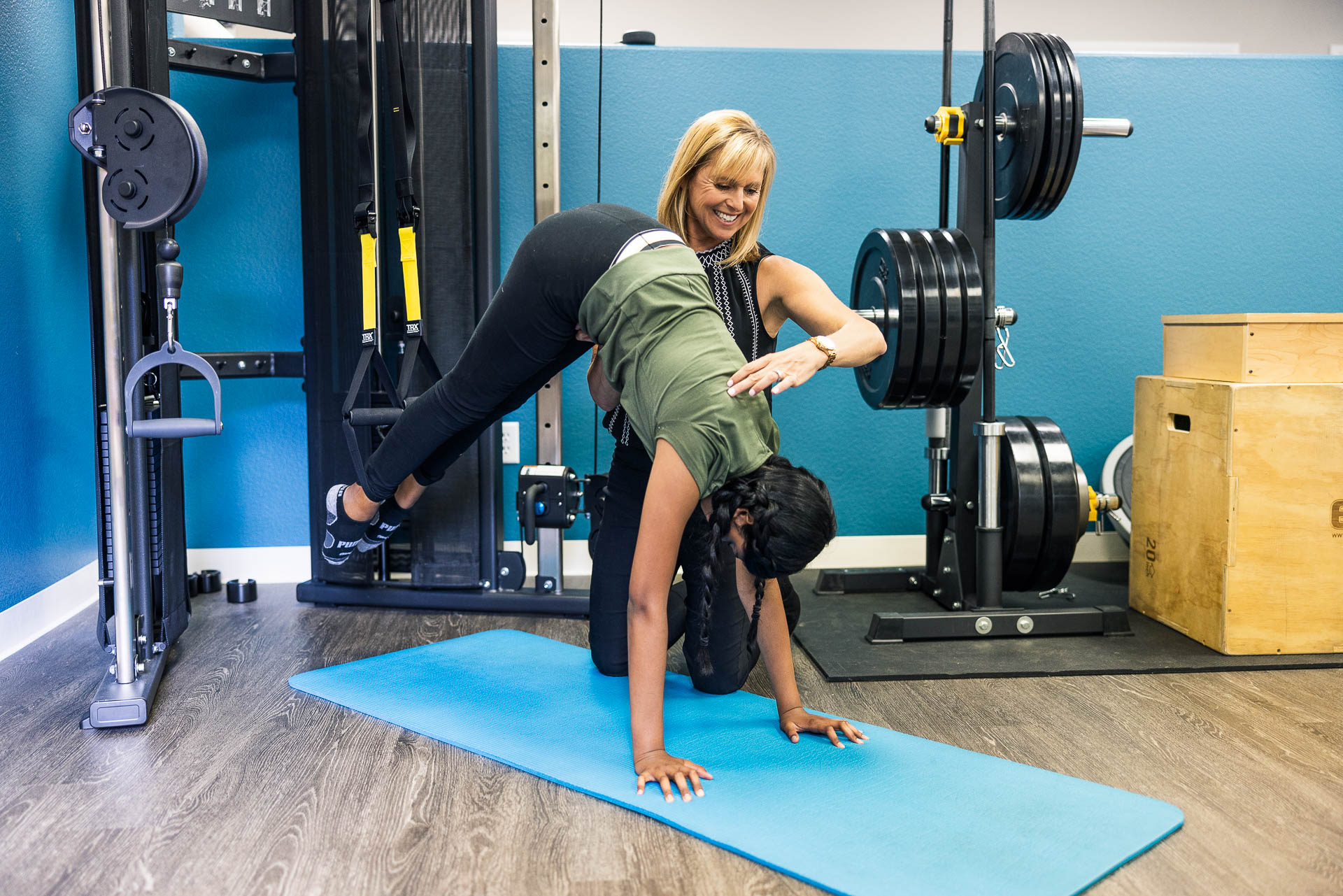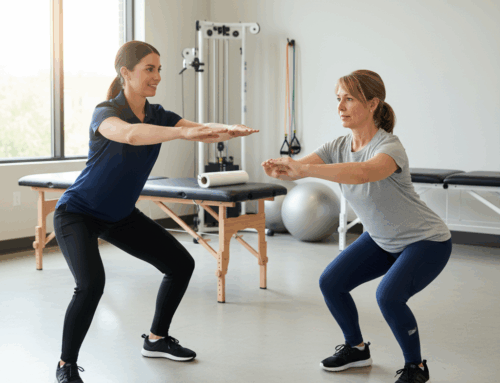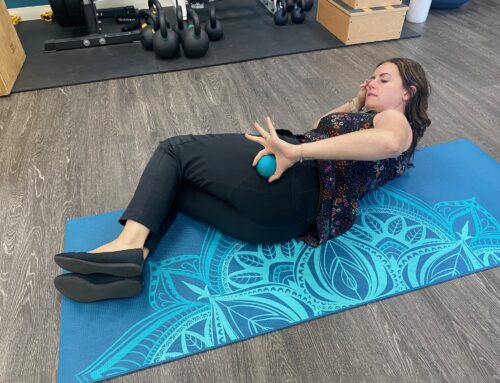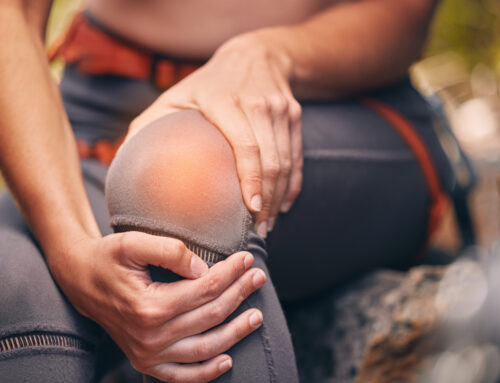Inflammation is the body’s natural response to injury, infection, or stress. It’s a crucial part of the healing process, helping to repair damaged tissues and fight off harmful invaders. However, when inflammation lingers too long or becomes excessive, it can actually slow down recovery and lead to chronic pain, stiffness, and limited mobility.
For individuals recovering from injuries, surgeries, or chronic conditions, managing inflammation is key to regaining movement and function. This is where physical therapy plays a vital role. By using targeted techniques, movement-based treatments, and recovery strategies, physical therapists help control inflammation while promoting healing.
READ: Unleash the Athlete Within: Reno’s Guide to Staying Strong, Fast, and Injury-Free
In this article, we’ll explore why inflammation can hinder recovery and how physical therapy provides effective solutions to get you back to moving freely and pain-free.
Understanding Inflammation: The Body’s Response to Injury
Inflammation is the body’s built-in defense mechanism against injury and illness. When tissues are damaged—whether from a sprain, strain, surgery, or overuse—the immune system triggers an inflammatory response to protect and heal the affected area.
Acute vs. Chronic Inflammation
Not all inflammation is harmful. In fact, there are two types:
- Acute Inflammation – A short-term response that helps with healing. It often causes redness, swelling, warmth, and pain at the site of injury. This is a natural and necessary part of the recovery process.
- Chronic Inflammation – When inflammation persists beyond the initial healing phase, it can lead to joint stiffness, prolonged pain, and reduced mobility. This can occur due to poor circulation, repeated injuries, or underlying health conditions like arthritis.
How Inflammation Impacts Recovery
While inflammation is meant to protect the body, too much of it can actually slow down healing. Here’s how:
- Increases Pain Sensitivity – Swelling can put pressure on nerves, leading to increased discomfort.
- Reduces Blood Flow – Chronic inflammation can limit circulation, slowing down the delivery of oxygen and nutrients needed for tissue repair.
- Leads to Stiffness and Weakness – Prolonged swelling can cause muscle tightness and joint restriction, making movement more difficult.
Signs That Inflammation is Delaying Your Recovery
- If you’re experiencing any of the following, inflammation may be slowing your progress:
- Persistent swelling or redness in the affected area
- Pain that doesn’t improve with rest and basic care
- Stiffness or difficulty moving after extended periods of inactivity
- A sensation of heat or tenderness in the muscles or joints
Understanding the role of inflammation in recovery is the first step. The next step? Using physical therapy to manage inflammation and accelerate healing.
How Physical Therapy Reduces Inflammation
 Physical therapy is a proven method for managing inflammation while promoting safe and effective recovery. By combining movement-based treatments, hands-on techniques, and therapeutic modalities, physical therapists help patients reduce swelling, restore mobility, and prevent long-term complications.
Physical therapy is a proven method for managing inflammation while promoting safe and effective recovery. By combining movement-based treatments, hands-on techniques, and therapeutic modalities, physical therapists help patients reduce swelling, restore mobility, and prevent long-term complications.
READ: Winning the Battle Against Pain: How Reno’s Physical Therapists Keep You Thriving
Techniques Used in Physical Therapy to Decrease Inflammation
Manual Therapy
Hands-on techniques, such as soft tissue mobilization, myofascial release, and joint mobilization, help improve circulation, reduce swelling, and break up adhesions that may form due to prolonged inflammation.
Therapeutic Exercise
Guided movement is essential for reducing stiffness, improving blood flow, and strengthening weakened muscles. A physical therapist will develop a customized exercise plan that gradually increases mobility without aggravating inflammation.
Modalities for Inflammation Control
Physical therapists often use specialized treatments to manage inflammation, such as:
- Cold Therapy (Cryotherapy) – Reduces swelling and numbs pain by constricting blood vessels.
- Heat Therapy – Promotes blood flow to stiff or tight muscles, easing discomfort.
- Electrical Stimulation (E-Stim) – Encourages muscle activation and circulation, which can help clear out inflammatory byproducts.
- Compression Therapy – Helps control swelling by improving lymphatic drainage and circulation.
The Importance of Guided Movement in Preventing Stiffness
One of the biggest risks of prolonged inflammation is reduced range of motion due to stiffness and disuse. A physical therapist ensures that movement is introduced at the right pace to prevent further irritation while promoting optimal healing and functional recovery.
By addressing inflammation through targeted therapy, patients can heal faster, experience less pain, and regain mobility more effectively.
Best Exercises to Reduce Inflammation and Improve Mobility
While rest is important in the early stages of recovery, gentle movement is key to reducing inflammation and preventing stiffness. Physical therapy incorporates low-impact exercises that help restore mobility while avoiding further irritation.
Gentle Mobility Exercises Recommended by Physical Therapists
1. Ankle Pumps
- Helps improve circulation and reduce swelling in the lower body.
- How to do it: While sitting or lying down, point and flex your feet slowly for 10–15 repetitions.
2. Shoulder Rolls
- Loosens tight muscles and promotes better movement in the upper body.
- How to do it: Slowly roll your shoulders forward and backward in a circular motion for 10 repetitions each.
3. Heel Slides
- Enhances knee mobility and reduces stiffness.
- How to do it: Lie down on the floor with feet flat on the floor, or up on a wall then slide heel towards your rear bending your knee then slide away from your body extending one leg straight out. Hold for a few seconds. Repeat 10 times per leg.
READ: The Benefits of Sports-Specific Physical Therapy: Helping Reno Athletes Stay Injury-Free
4. Cat-Cow Stretch
- Encourages spinal mobility and helps relieve stiffness.
- How to do it: On all fours, alternate between arching and rounding your back in a slow, controlled manner for 10 repetitions.
The Role of Stretching, Strength Training, and Low-Impact Movement
In addition to mobility exercises, physical therapists often recommend:
- Stretching – Helps improve flexibility and reduce muscle tension.
- Strength Training – Builds stability around inflamed joints and prevents muscle loss.
- Low-Impact Activities – Walking, swimming, or cycling can help maintain movement without putting stress on the body.
When to Avoid Certain Movements
Not all exercises are suitable for every injury. Avoid:
- High-impact activities that may worsen inflammation (such as running or jumping).
- Overstretching inflamed muscles or joints, which can lead to increased pain.
- Exercises that cause sharp or prolonged discomfort—a sign that your body isn’t ready for that movement yet.
A licensed physical therapist can guide you through the right exercises for your specific needs, ensuring that movement helps reduce inflammation rather than worsen it.
Lifestyle Tips for Managing Inflammation
In addition to physical therapy, lifestyle choices play a major role in controlling inflammation. By incorporating healthy habits, you can support the recovery process and reduce the risk of chronic pain or stiffness.
READ: Strength in Every Step: How Physical Therapy Improves Mobility and Joint Health for Active Adults
Nutrition and Hydration for Inflammation Control
The foods you eat can either promote or reduce inflammation. A well-balanced, anti-inflammatory diet includes:
- Omega-3 Fatty Acids – Found in salmon, flaxseeds, and walnuts, these help reduce inflammation.
- Leafy Greens and Colorful Vegetables – Packed with antioxidants and vitamins that support healing.
- Fiber-Rich Foods – Help regulate the body’s inflammatory response.
- Turmeric and Ginger – Natural anti-inflammatory spices that can ease joint and muscle pain.
- Adequate Water Intake – Staying hydrated helps flush out inflammatory toxins and keeps joints lubricated.
The Importance of Sleep and Stress Management
- Quality sleep is essential for tissue repair and reducing systemic inflammation. Aim for 7–9 hours per night.
- Stress increases inflammation by releasing cortisol, which can slow down healing. Practices like deep breathing, meditation, or gentle movement can help lower stress levels.
How Physical Therapy Complements an Anti-Inflammatory Lifestyle
- Physical therapy encourages consistent movement, which helps manage inflammation naturally.
- Therapists provide education on posture, ergonomics, and body mechanics to prevent unnecessary strain on inflamed areas.
- Combining physical therapy with healthy lifestyle habits creates a comprehensive approach to reducing inflammation and promoting long-term wellness.
By making small but powerful lifestyle changes, you can enhance the benefits of physical therapy and experience a faster, smoother recovery.
Prioritizing Recovery with Physical Therapy
Inflammation is a natural part of the healing process, but when it lingers too long, it can delay recovery and limit mobility. By incorporating targeted physical therapy techniques, movement-based treatments, and lifestyle adjustments, you can effectively manage inflammation and support long-term healing.
At Battle Born Health in Reno, NV, our team of experienced physical therapists specializes in creating personalized recovery plans to help patients reduce inflammation, restore mobility, and prevent future injuries. Whether you’re dealing with post-injury swelling, chronic pain, or mobility challenges, we provide expert care to get you back to moving freely and comfortably.
Take the Next Step Toward Healing
Don’t let inflammation slow you down. Schedule an appointment with Battle Born Health today and take control of your recovery.
For more information on how physical therapy can help, visit our Physical Therapy Services page or contact us to get started.




